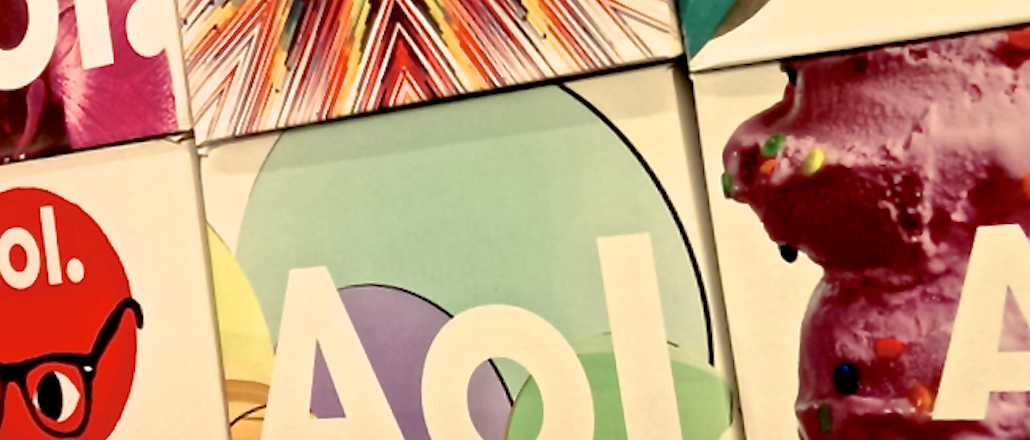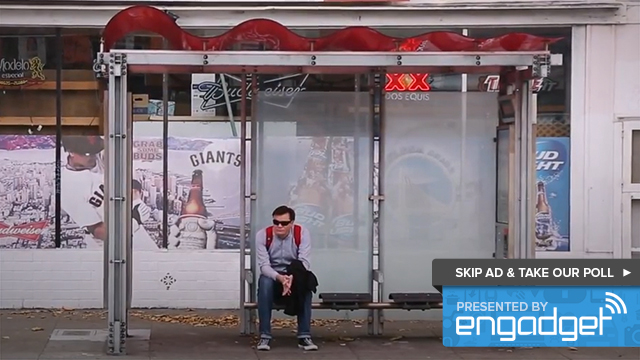
With its video advertising business growing, AOL now wants advertisers to shake off their reliance on standard pre-rolls.
The company is introducing its first-ever “premium” video ad formats, which give advertisers multiple ways to add interactive features to their existing creative.
“Our perspective is that video is just the first step,” said David Miller, vp of ad product management for AOL. “A view just means your message is getting across. We want to make sure that happens, and also that you have a chance for a deeper conversation with the viewer.”
Take, for instance, what’s likely to be the most popular format within the new group, the “branded skip.” It’s similar to the the skippable format popularized by YouTube, but it goes a bit further by including a polling or “branding” feature that allows advertisers to collect some information from users before they move on to the content.

“This is the one I’m most excited about,” said Miller. “What we’re trying to do is to make sure that some level of conversation is happening between the advertiser and the viewer. A lot of skippable ads out there right now offer no branding or conversation opportunity by the time the consumer chooses to skip.”
Of course, skippable ads have been previously available on AOL’s advertising platform. But those were from third-party vendors. This is the first such format built by AOL.
Other video ad formats in the new offering include: “Linear expandable,” an in-video banner which, when clicked, pulls up a microsite that advertisers can use to deliver more content, information or offers; “linear modules,” which adds interactive icons (such as sharing buttons) to the pre-roll; “linear sequence,” which introduces an interactive “end-frame” once the video is completed; and “branded slate,” which gives advertisers the chance to run a seven-second “presented by”-style of animation before the video.
Miller calls the new formats a natural “evolution” of what the company has been doing since 2010, when it introduced a large, glossy display format called “Devil.” The goal here, as it was with Devil, is to help advertisers go beyond the standard formats available in the market today.
With video, that means making pre-rolls interactive. “There is more of an opportunity in video than just sight, sound and motion,” said Miller. “If I can show you where consumers are interacting with ads — where they’re clicking on, rolling over, hovering over — all of that should be reportable and actionable back to the advertiser so they can focus on what’s next.”
There is data that suggests the potential value of interactive pre-rolls. According to a March 2015 study from Innovid, which measured global impressions delivered to desktops via its platform in 2014, interactive video ads outperformed standard pre-rolls across almost all metrics, including completion rate (77.7 percent vs. 75.4 percent) and percentage of ad viewed (84.3 percent vs. 79.4 percent). Standard pre-rolls did better at click-through rates, achieving 0.8 percent compared to 0.4 percent for interactive ads, but Innovid said that was due to most interactive ads being designed to keep viewers within the unit.
AOL’s formats are not “templated,” which means advertisers will have the option of using any of the interactive elements across the unit to encourage interaction.
Initially, the formats will be available for desktop, though eventually the company plans to expand them to mobile and OTT environments. Havas is one of the first beta testers to buy the formats and will be running them on behalf of “a large pay-TV company,” according to an AOL spokesperson.
Once open to the wider market, the formats will be available across the AOL On video network, which offers videos produced by AOL, its publishing brands and publishing and video-syndication partners. Advertisers will also be able to buy them programmatically through the One by AOL platform.
Images provided by AOL
More in Media

From sidelines to spotlight: Esports events are putting creators center stage
Esports events’ embrace of content creators reflects advertisers’ changing priorities across both gaming and the wider culture. In the past, marketers viewed esports as one of the best ways to reach gamers. In 2025, brands are instead prioritizing creators in their outreach to audiences across demographics and interest areas, including gaming.

Condé Nast and Hearst strike Amazon AI licensing deals for Rufus
Condé Nast and Hearst have joined the New York Times in signing a licensing deal with Amazon for its AI-powered shopping assistant Rufus.

Media Briefing: AI payouts may be entering a new era
AI compensation is evolving — and new models, not just publisher demands, are driving the shift beyond flat-fee licensing.





